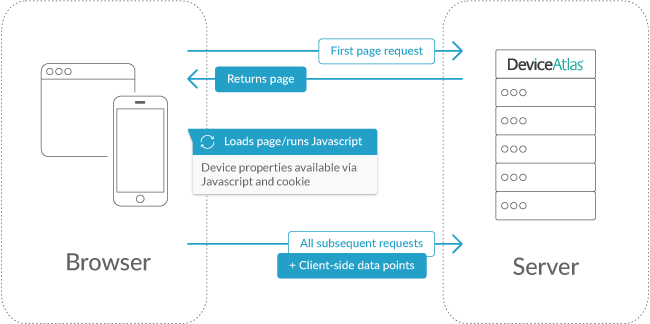Apple's release of iOS 12.2 brought some useful features to iPhone users.
For the first time, Canadians could access Apple News, which had been rolled out to the US, UK and Australia in a previous release.
A sign of the ongoing interest major tech players are taking in content delivery, 12.2 laid some groundwork for future AirPlay 2 and HomeKit support, likely to become useful later in the year as TV manufacturers get on board. Apple Pay, Wallet and Screen Time also saw some tweaks, with four new emojis for....whatever.

For a full rundown, MacRumours published a good overview.
What you won't see reported is the collateral fallout from Apple's latest updates. For anybody who benefits from detecting and differentiating between iPhone models, 12.2 presented a problem.
iOS 12.2 broke device detection
Apple have been leading the charge for privacy in recent months, with Google and Facebook the targets of their savvy PR campaigns.
While noble, the latest development caused some problems for our Client-Side iPhone detection solution. In essence, Apple no longer reports the GPU model for each device. They made this change as it reduces the fingerprinting surface available to many modern tracking solutions.
Previously, this was a key factor in determining the exact type of iPhone.
The trend had been to use different GPUs for each successive model of iPhone. However, as Apple no longer provide this property, we had to get creative with our solution.
Our new approach, which we've been testing for weeks on some public websites, involved taking advantage of differing traits GPUs display when drawing complex images.
Accurate iOS detection
The new solution involved drawing a complex image on a webpage, hidden to the eye. This drawing is reduced to a short signature that's sent to DeviceAtlas on the server side.
The subtle differences between curve rendering or blurring can point us to a specific GPU, leading to accurate model identification.
The whole process is lightning fast, with almost zero impact on site performance. As Apple sometimes re-use GPUs between models, we cross-reference the drawing signature with certain other identifying properties, eg. screen resolution, pixel ratio etc, to determine model should GPU alone not be enough.
There are some classes of iPads that remain grouped, however, meaning in some cases we can't tell the exact model type.
What does this mean for you?
Nothing - the DeviceAtlas Client-Side solution is working as intended, allowing users to accurately identify iPhone models as always.

DeviceAtlas Client-side Component workflow
Of course, our solution doesn't require or utilise any personally identifying information (PII).
For more information on our solution to iPhone detection, click here or the below link to download our free whitepaper on iPhone Detection.



